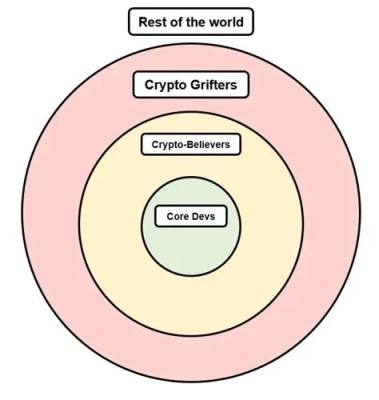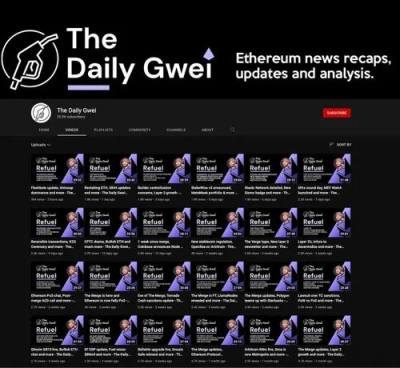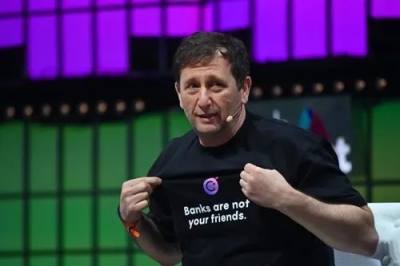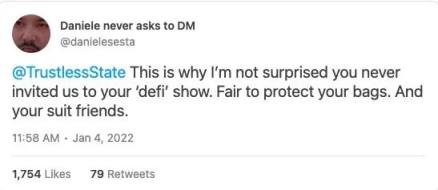The "Buddha Nature" of the Crypto World: Monks, Believers, and Scammers
Original: “Why Is Crypto Full of Scams?” by David Hoffman, Founder of Bankless
Compiled by: Colin, SevenUpDAO Returnee Association
To the outside world, cryptocurrency is just a corner of the internet, filled with scams and schemes.
But Bankless has a different view of cryptocurrency: a land full of opportunities, a new frontier, a digital world built on free and open-source software that enables us to break the monopolies of Wall Street and Silicon Valley institutions.
So why do most people think cryptocurrency is full of scams? If it is filled with scams, why do people keep coming to learn about it? What makes them curious? Or is cryptocurrency really just one big scam?
Today's article introduces my "Concentric Circles of the Crypto Industry" model, which explains why so many people outside of crypto perceive this industry as a scam.
This model can help crypto newcomers grasp the knowledge that aids in navigating the dark forest of crypto more easily, and it provides more insight into the types of people you will encounter in crypto—who to watch out for and who to avoid.
Concentric Circles of Crypto Model
I have simplified the model that constitutes the crypto industry into a set of four concentric circles.
Core developers are at the very center, with the rest of the world outside, and crypto believers and scammers in between.
Core Developers
Let's start from the very center. Core developers are the builders and philosophers who construct this industry based on fundamental crypto principles. They have a profound understanding of the current problems in the world, how cryptography and blockchain technology excel at solving these problems, and the fundamental impact it has on the future. They understand the philosophical, coding, and ethical benefits that this technology can bring to the world.
This is what we mean by "the value of cryptocurrency."
In this circle, you will find the anonymous creator of Bitcoin, Satoshi Nakamoto, who hatched the Bitcoin blockchain and then slowly disappeared from the internet because he knew that Bitcoin would be better off without a leader.
You will also find Vitalik Buterin, the creator of Ethereum. Vitalik is a digital monk, an expert in cryptography, philosophy, mathematics, and of course, cryptoeconomics. Vitalik aims to build public goods and social systems that promote global welfare. Despite being very wealthy, he is known to sleep in hostels and live out of a backpack because he does not want to consume more resources than he needs.
He is the crypto monk of the digital age.
Core developers may have a thankless job. Building open-source software is often undervalued, and the rewards they receive relative to the value they bring to the world are limited.
Bitcoin core developers work tirelessly every day to make Bitcoin better. Ethereum core developers meet publicly every week to discuss what to do next and what society needs from the foundation they are building.
These people are here because they believe in a mission; they see a better future and need help to make it a reality.
Core developers are the purists at the center of the crypto world, whose leadership creates the allure of the crypto world and tirelessly works for its future.
We come for them… they come for us.
Crypto Believers
The next layer is crypto believers.
These are the most devout followers of the crypto world. These people believe in the same future that core developers are building and live on the foundation established by core developers.
This circle is not just made up of users; application developers, DAO members, and companies are also building interwoven layers of products and services around these new protocols.
Ethereum is a protocol that we all develop around. Applications like Uniswap, Aave, or Maker are built on the Ethereum application layer with smart contracts. DAOs like BanklessDAO, PleasrDAO, and Constitution DAO also organize using Ethereum. Companies are also organized around Ethereum, such as venture funds, news agencies, or media companies… like Bankless!
This circle is filled with settlers, not tourists.
They are citizens of the crypto world, building structures in this new frontier, testing products in experimental phases, slowly becoming less reliant on centralized banks by managing their funds and assets on crypto rails, and establishing new digital identities for themselves. These settlers reside in an open and free metaverse, building with open-source software and the spirit of openness.
These people are like Rune Christensen, who saw the need for a decentralized dollar and created the vision for MakerDAO… even before DAOs existed! Now, billions of DAI exist to escape their government's mismanaged currency.
Or Hayden Adams, who, after learning how to code, single-handedly built Uniswap, a public and free asset exchange system, with the help of a $10,000 grant from the Ethereum Foundation.
Then there’s Cami Russo, who lives in Argentina and has personally experienced how the hyperinflation of the Argentine peso created a demand for crypto industry products. DAI, a native crypto stablecoin, has seen widespread adoption in Argentina as it is a tool for Argentinians to escape a 50-100% inflation rate.
Cami studied journalism, and after becoming fascinated with cryptocurrency, she founded the media publication The Defiant.
Anthony Sassano is one of my favorite crypto believers. He produces a video that introduces the world to what has happened in the Ethereum ecosystem over the past 24 hours. Every day.
These are the members broadcasting the progress the industry is making. Core protocol developers and application builders often struggle to market themselves because their attention is focused on building the future. The crypto industry relies on the surrounding community to get this job done.
And this surrounding community exists simply because we all came here for the same reason: believing that the existence of cryptocurrency is to build a better and freer world… a necessary step for humanity to move into the future.
This crypto world is something that much of the public cannot see or understand.
One important reason for this is that Crypto Grifters separate it from the rest of the world.
Crypto Scammers
Between crypto believers and the rest of the world is an obstacle course… the asteroid belt of crypto scammers, who make it difficult for others outside the crypto world to hear the signals from the true pioneers of the cryptocurrency industry.
Scammers often engage in self-promotion to create a grand image of themselves. They adopt polarizing strategies and styles that we have seen work very effectively in politics. Crypto scammers are not stupid—they know there is a lot of wealth to be extracted at the crypto frontier… they are here solely to seize wealth.
Crypto scammers are the reason for the bad reputation of cryptocurrency. They are louder and more flamboyant than the average crypto person. They promote themselves rather than creating technology. They often do not care about the technology they build; they only care about how they can make money from it… regardless of how unsustainable or unethical it may be. They deliberately construct malicious products designed to trap naive crypto newcomers.
They create paid Telegram channels where they share "alpha," but in reality, they are just getting you to take the bait. If you fall into their traps, they will create complex DeFi projects that merely transfer money from your pocket to theirs.
Most scammers appear during bull markets and replicate whatever is hot at the moment. They created fake ICOs in 2017 or effortless NFT projects in 2021 with Fiver. Scammers keenly look for every profitable opportunity and then flock to it.
They share some common traits:
A narcissistic personality, boastful, and sometimes a bit bullying.
A small but highly engaged and fanatical community forms around these individuals, creating a cult of personality. They repeat ineffective information, recite carefully prepared lines, and then sell their tokens to people. They suppress dissent; they are a classic combination of humans and bots we encounter in the modern social media world.
A fundamentally unsustainable product or system… even if it seems good at the moment. A shiny new crypto product that makes no sense under the hood… ultimately collapses.
Alex Mashinsky
Alex Mashinsky built and operated a custodial lending service called Celsius. A centralized company that receives customers' crypto assets and pays high yields on their deposits. This is a normal business; it’s called a bank. There are many legitimate products and services in cryptocurrency that can do this.
But Mashinsky touted DeFi, claiming how DeFi would crush banks. Yet he actually built a bank and took customers' deposits, deploying completely irresponsible leveraged trading strategies, gambling with customers' money.
Daniele Sesta
Then there’s Daniele Sesta, who established the Wonderfulland ecosystem. Following closely behind Sesta is a large group of Pepe Frog accounts that swarm him wherever he goes online. Crypto Twitter, YouTube comments, live chat boxes… you name it.
They invade and infect newcomers who spend time and money in cryptocurrency, occupying their mental space because their voices are so loud. We have seen this strategy before both inside and outside of cryptocurrency, but in crypto, when money is involved, these internet armies can become particularly deafening.
In any case, when people realized that an unsupported stablecoin was just a vague Ponzi scheme, Wonderland collapsed.
Do Kwon
Then there’s Do Kwon… the quirky and combative founder of Terra. The largest capital destruction event in crypto history, where $50B in capital went to zero.
The Terra ecosystem lost all incoming funds overnight, revealing itself to be an unsustainable structure. In hindsight, it looks a bit like a massive Ponzi scheme.
Like Sesta, Do Kwon has a large army that calls themselves "the lunatics." Ryan and I were skeptical of the Terra Luna project, and when we expressed our criticisms and dissent, we were attacked on Twitter by these crazy lunatics.
Do Kwon's behavior contributed to this. As Terra expanded wildly, Do Kwon became louder and more aggressive on Twitter, rallying his followers.
When Galaxy CEO Mike Novogratz got a tattoo of Terra Luna on his arm, Ryan replied on Twitter, "This makes me question my understanding of crypto," to which Do Kwon sarcastically responded, "Don't worry, you actually don't understand much."
Must We Coexist with Scammers?
The answer is yes, but also no.
We cannot directly stop scammers. When we hold the value of decentralization above all else, this is the price we must pay.
Access for all is a core value; it cannot be sacrificed.
Just like the internet, no one needs permission to use crypto… it is a public utility in the realm of currency and finance that anyone with an internet connection can use. Over time, these utilities become increasingly useful as the financial world of DeFi is built and organically improved with more and more users.
Unfortunately, this same permissionless attribute makes it difficult to stop scammers' schemes. Permissionless financial innovation has liberated us—you and me—from the financial prison that banks and Wall Street have locked us in, but it also means it is hard to stop others from trying to make unethical money.
While we cannot directly stop them, we do not have to live with them.
We combat them with education. As an industry, we do need to better reach the public before the scammers do. It’s hard to compete with the grand and exaggerated marketing efforts that utilize sensationalism. Crypto is complex, and understanding what makes this industry tick is harder than just listening to some charismatic people tell you to buy their tokens.
The good news is that today, most people have a basic instinct to steer clear of spam and viruses on the internet. Ultimately, cryptocurrency is no exception.

















